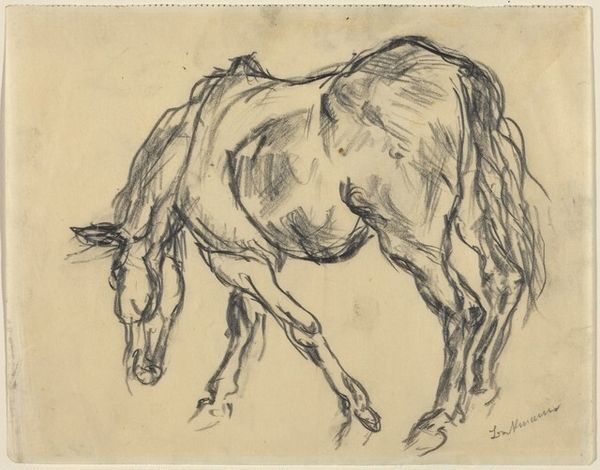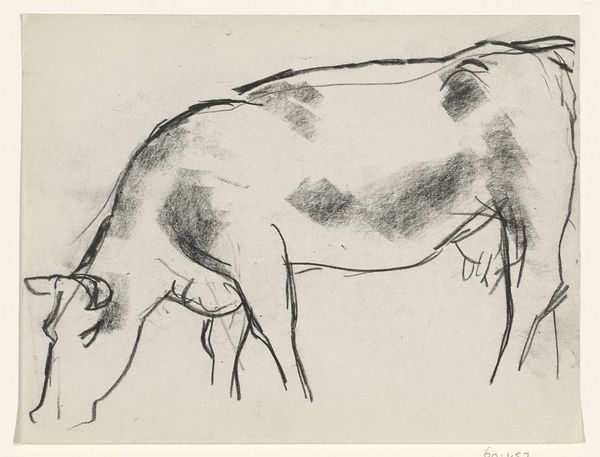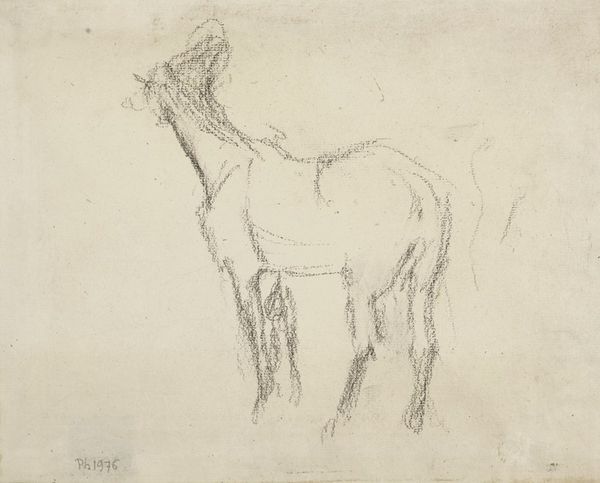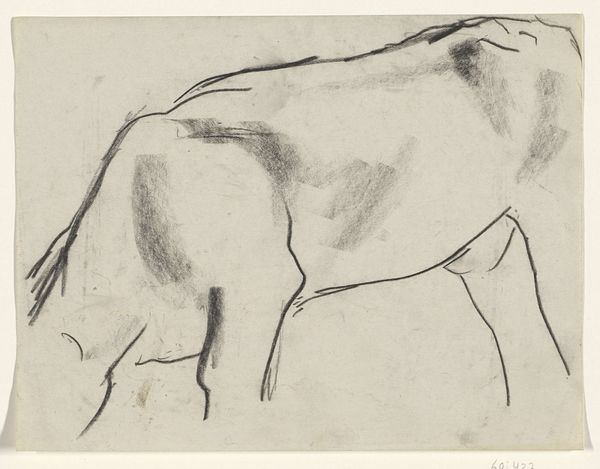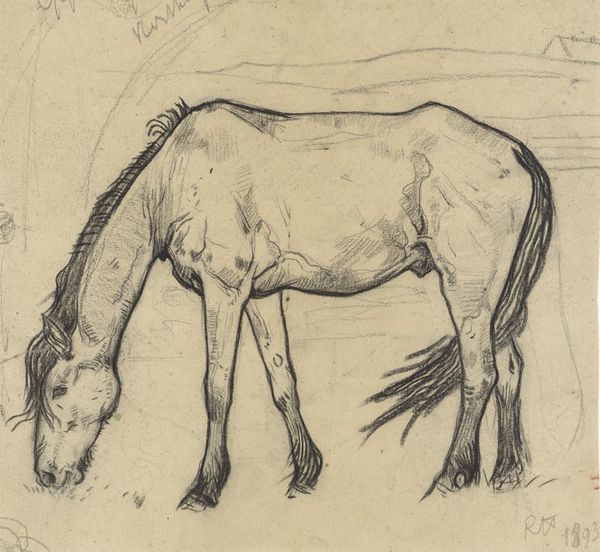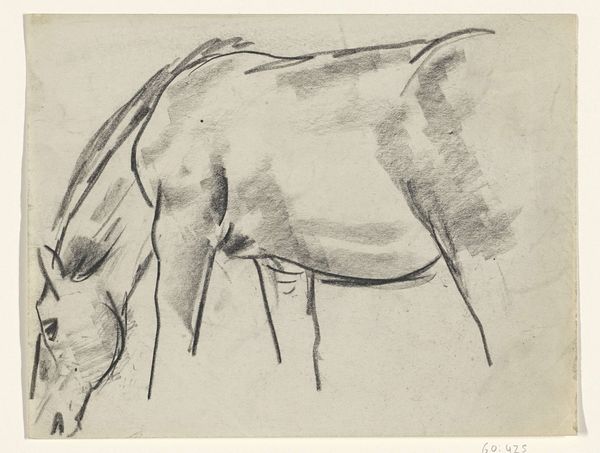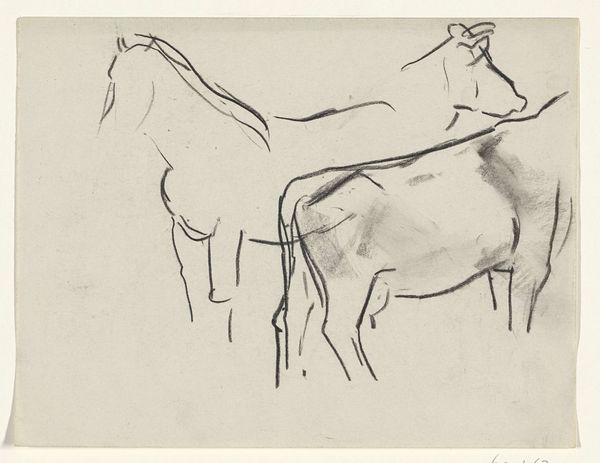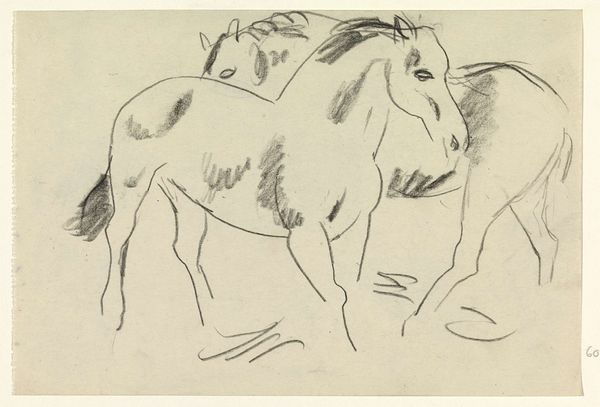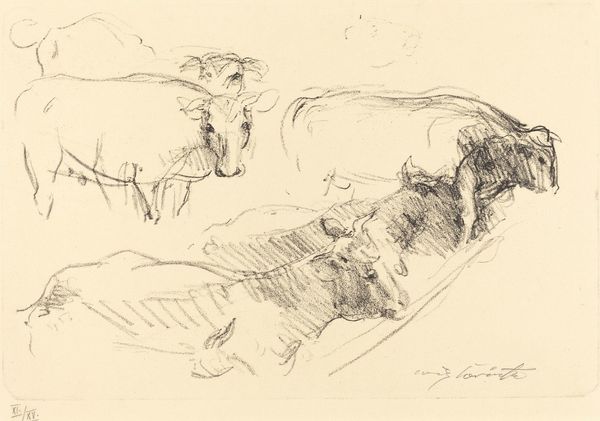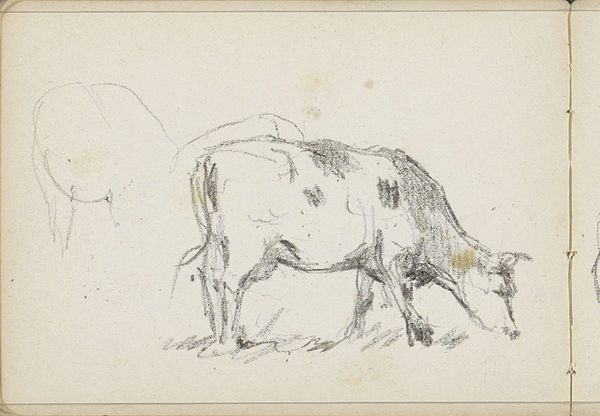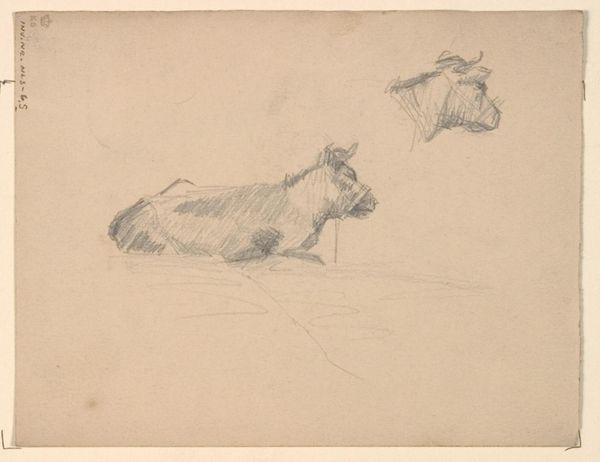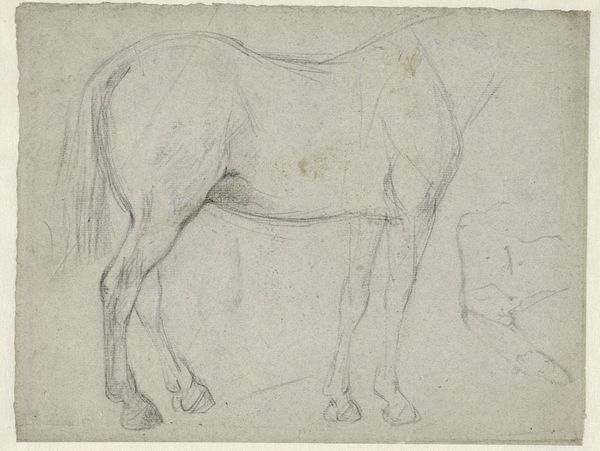
drawing, pencil
#
drawing
#
landscape
#
figuration
#
romanticism
#
pencil
Copyright: Public Domain: Artvee
Editor: This is "Studies of a Horse in Profile" by Eugène Delacroix, made sometime between 1823 and 1830. It's a pencil drawing, very gestural and free. The horse feels powerful, yet the lines are delicate. What strikes you about it? Curator: What's immediately compelling is the tension between Romanticism's embrace of the emotional and the academic study of animal anatomy. Delacroix, working in a period defined by social upheaval and changing power structures, would have seen the horse as more than just an animal. It was a symbol, think about how the rising bourgeois class began participating in equestrian activities that were previously reserved for the elite. Do you think Delacroix is capturing an individual horse, or something more? Editor: That's interesting! I hadn’t considered the social aspect. I guess I was just seeing a horse! Maybe he is hinting at something grander than one animal. The posture almost makes it seem defiant, doesn't it? Curator: Precisely! Consider how Delacroix and his contemporaries used animal imagery in political cartoons and revolutionary art. How does this study inform his larger paintings, perhaps "Liberty Leading the People?" Does this loose drawing style carry through? Editor: Yes, I think so. Even in those large-scale paintings, there is a sense of immediacy and movement, kind of like this drawing. The Romanticism influence makes much more sense when you place it in a larger socio-political context. Curator: Indeed. So what's your take-away now? How do you view Delacroix and his studies of horses differently? Editor: I see Delacroix's work as less about solitary genius and more connected to a specific cultural moment. His studies served both artistic and, potentially, social purposes. Curator: That’s wonderfully insightful. Thinking about art as engaged with its contemporary context— that's a key step in truly understanding its significance.
Comments
No comments
Be the first to comment and join the conversation on the ultimate creative platform.
